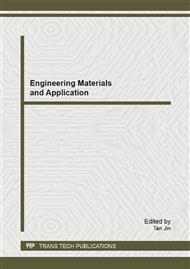p.462
p.466
p.470
p.474
p.480
p.486
p.492
p.499
p.505
The Effect of Surface Treatment on Composites of Water Hyacinth Natural Fiber Reinforced Epoxy Resin
Abstract:
Water hyacinth is an aquatic weed which has potential of natural fiber as raw material of composites. The mechanical properties and the availability of water hyacinth in tropical country are a potential that could be developed as natural fiber in composite. In this experiment, surface of water hyacinth treated by silane coupling agent for adhering with epoxy resin. Dry water hyacinth can be obtained by cold pressed and hot pressed which the temperature are varied. The tensile strength of water hyacinth that hot pressed treatment at 110 oC, is 28.36 N/mm2. Silane coupling agent is used for surface treatment. The immersion time of Dry water hyacinth in silane coupling agent is varied from 5, 10, and 15 minutes. The Composite with 15 minutes of immersion time of water hyacinth has the highest bending strength (20.524 N/mm2). From SEM observations showed that the influence of the silane coupling agent is very significant.
Info:
Periodical:
Pages:
480-485
Citation:
Online since:
January 2013
Keywords:
Price:
Сopyright:
© 2013 Trans Tech Publications Ltd. All Rights Reserved
Share:
Citation:


